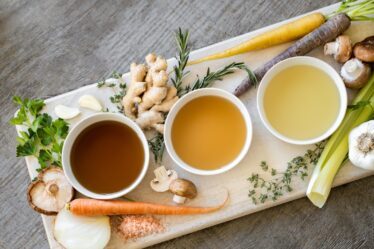
Cumin is a spice that has been used for centuries and has a rich history in various cultures around the world. It is believed to have originated in the Mediterranean region and has been cultivated since ancient times. The use of cumin can be traced back to ancient Egypt, where it was used as a culinary spice, as well as for medicinal purposes and in the embalming process.
Cumin was highly valued in ancient civilizations for its aromatic and medicinal properties. It was used by the Greeks and Romans for its digestive benefits and was even mentioned in the Bible as a valuable spice. In medieval Europe, cumin was considered a symbol of love and fidelity and was often used in wedding ceremonies.
Key Takeaways
- Cumin has a rich history and is a versatile spice used in many cuisines around the world.
- Cumin has numerous health benefits, including aiding digestion and boosting the immune system.
- Cumin is commonly used in Indian cuisine, particularly in curry and masala dishes.
- Mexican cuisine also utilizes cumin to enhance the flavors of tacos and salsas.
- Middle Eastern cuisine incorporates cumin as a key ingredient in hummus and falafel.
Health Benefits of Cumin: From Digestion to Immune System Boosting
Cumin is not only a flavorful spice but also has numerous health benefits. It is known to aid digestion by stimulating the production of enzymes that break down food in the stomach. This can help alleviate symptoms of indigestion, bloating, and gas.
Studies have also shown that cumin has anti-inflammatory properties and can help boost the immune system. It contains antioxidants that can help protect against oxidative stress and reduce inflammation in the body. Cumin has also been found to have antimicrobial properties, which can help fight against bacteria and fungi.
Furthermore, cumin has been shown to have potential anticancer properties. Some studies have found that cumin extract can inhibit the growth of cancer cells and induce apoptosis, or programmed cell death, in certain types of cancer.
Culinary Uses of Cumin: Adding Flavor to a Variety of Dishes
Cumin is widely used in cooking and adds a distinct flavor to dishes. It has a warm, earthy, and slightly bitter taste that pairs well with a variety of ingredients. Cumin seeds are often toasted before being ground to enhance their flavor.
Cumin is commonly used in spice blends, such as curry powder and garam masala, and is a key ingredient in many Indian, Mexican, Middle Eastern, and African dishes. It can be used in both savory and sweet dishes and pairs well with ingredients like garlic, onions, tomatoes, and chili peppers.
Cumin in Indian Cuisine: A Staple Spice in Curry and Masala
| Category | Metric |
|---|---|
| History | Cumin has been used in Indian cuisine for over 5000 years. |
| Flavor Profile | Cumin has a warm, earthy, and slightly bitter taste. |
| Health Benefits | Cumin is a good source of iron, aids in digestion, and has anti-inflammatory properties. |
| Usage | Cumin is a staple spice in Indian curries, masalas, and spice blends. |
| Pairings | Cumin pairs well with coriander, turmeric, and chili powder. |
Cumin is an essential spice in Indian cuisine and is used in a wide variety of dishes. It is a key ingredient in curry powder, which is a blend of spices commonly used in Indian cooking. Cumin adds depth and flavor to curries, stews, and lentil dishes.
One popular Indian dish that uses cumin is butter chicken. The cumin seeds are toasted in ghee, or clarified butter, before being added to the sauce. The cumin adds a warm and earthy flavor to the dish.
Cumin is also used in masala chai, a spiced tea that is popular in India. The cumin seeds are toasted along with other spices like cardamom, cinnamon, and cloves before being steeped in hot water with tea leaves and milk.
Cumin in Mexican Cuisine: Enhancing the Flavors of Tacos and Salsas
Cumin is a staple spice in Mexican cuisine and is used to add depth and flavor to dishes like tacos, salsas, and chili. It pairs well with ingredients like tomatoes, onions, garlic, and chili peppers.
In Mexican cuisine, cumin is often used in spice blends like chili powder and adobo seasoning. These blends are used to season meats, beans, and vegetables. Cumin adds a smoky and earthy flavor to these dishes.
One popular Mexican dish that uses cumin is chili con carne. The cumin seeds are toasted before being ground and added to the chili along with other spices like chili powder, paprika, and cayenne pepper. The cumin adds a warm and aromatic flavor to the dish.
Cumin in Middle Eastern Cuisine: A Key Ingredient in Hummus and Falafel

Cumin is a key ingredient in Middle Eastern cuisine and is used in dishes like hummus, falafel, and kebabs. It adds a warm and earthy flavor to these dishes and pairs well with ingredients like chickpeas, tahini, and garlic.
In Middle Eastern cuisine, cumin is often used in spice blends like za’atar and baharat. These blends are used to season meats, vegetables, and rice dishes. Cumin adds a distinct flavor to these blends.
One popular Middle Eastern dish that uses cumin is hummus. The cumin seeds are toasted before being ground and added to the chickpea puree along with other ingredients like tahini, garlic, lemon juice, and olive oil. The cumin adds a depth of flavor to the hummus.
Cumin in African Cuisine: Adding Depth to Spicy Stews and Tagines
Cumin is widely used in African cuisine and is a key ingredient in dishes like spicy stews, tagines, and couscous. It adds a warm and aromatic flavor to these dishes and pairs well with ingredients like tomatoes, onions, garlic, and chili peppers.
In African cuisine, cumin is often used in spice blends like ras el hanout and berbere. These blends are used to season meats, vegetables, and grains. Cumin adds a depth of flavor to these blends.
One popular African dish that uses cumin is jollof rice. The cumin seeds are toasted before being ground and added to the rice along with other spices like ginger, garlic, paprika, and chili powder. The cumin adds a warm and earthy flavor to the dish.
How to Use Cumin in Baking: From Bread to Desserts
Cumin is not only used in savory dishes but can also be used in baking to add a unique flavor to breads, pastries, and desserts. It pairs well with ingredients like honey, cinnamon, and dried fruits.
In baking, cumin is often used in breads like naan and focaccia. The cumin seeds are toasted before being added to the dough, adding a warm and aromatic flavor to the bread.
Cumin can also be used in desserts like cookies and cakes. It adds a subtle and unexpected flavor to sweet treats. One popular dessert that uses cumin is carrot cake. The cumin seeds are toasted before being ground and added to the cake batter along with other spices like cinnamon and nutmeg. The cumin adds a depth of flavor to the cake.
Cumin in Beverages: From Spiced Tea to Cocktails
Cumin can also be used in beverages to add a unique flavor and aroma. It pairs well with ingredients like ginger, cardamom, and citrus fruits.
In Indian cuisine, cumin is often used in spiced tea, or masala chai. The cumin seeds are toasted along with other spices like cardamom, cinnamon, and cloves before being steeped in hot water with tea leaves and milk. The cumin adds a warm and aromatic flavor to the tea.
Cumin can also be used in cocktails to add a unique twist. It pairs well with ingredients like citrus fruits, herbs, and spices. One popular cocktail that uses cumin is the Cumin Margarita. The cumin seeds are muddled with lime juice before being mixed with tequila, triple sec, and ice. The cumin adds a smoky and earthy flavor to the cocktail.
Cumin Varieties: Exploring the Differences Between Black, White, and Green Cumin
There are different varieties of cumin, each with its own distinct flavor and usage. The most common variety is black cumin, also known as Nigella sativa. It has a slightly bitter and nutty flavor and is often used in Indian and Middle Eastern cuisines.
White cumin, or Cuminum cyminum, is the most widely used variety of cumin. It has a warm and earthy flavor and is used in a variety of cuisines around the world.
Green cumin, or Bunium persicum, is a less common variety of cumin. It has a milder flavor compared to black and white cumin and is often used in Persian and Central Asian cuisines.
The different varieties of cumin can be used interchangeably in recipes, but they may impart slightly different flavors to the dishes. It is best to experiment with different varieties of cumin to find the one that suits your taste preferences.
Conclusion: Cumin is a versatile spice that has been used for centuries in a variety of cuisines and has numerous health benefits. Whether you’re cooking Indian curry or baking bread, cumin is a spice that can add depth and flavor to any dish. Its warm and earthy flavor pairs well with a variety of ingredients and can enhance the taste of both savory and sweet dishes. With its rich history and wide range of culinary uses, cumin is truly a spice worth exploring in your kitchen.
If you’re a fan of cumin powder spice and love exploring new recipes, you’ll definitely want to check out this article on Flavorful Sips titled “Cooking Karaikudi Vegetable Curry.” This delicious curry recipe incorporates the rich flavors of cumin powder along with a variety of other spices to create a mouthwatering dish that will leave you craving for more. Whether you’re a seasoned cook or just starting out in the kitchen, this article provides step-by-step instructions and helpful tips to help you recreate this authentic Indian dish. So grab your cumin powder and get ready to embark on a culinary adventure! Read more



